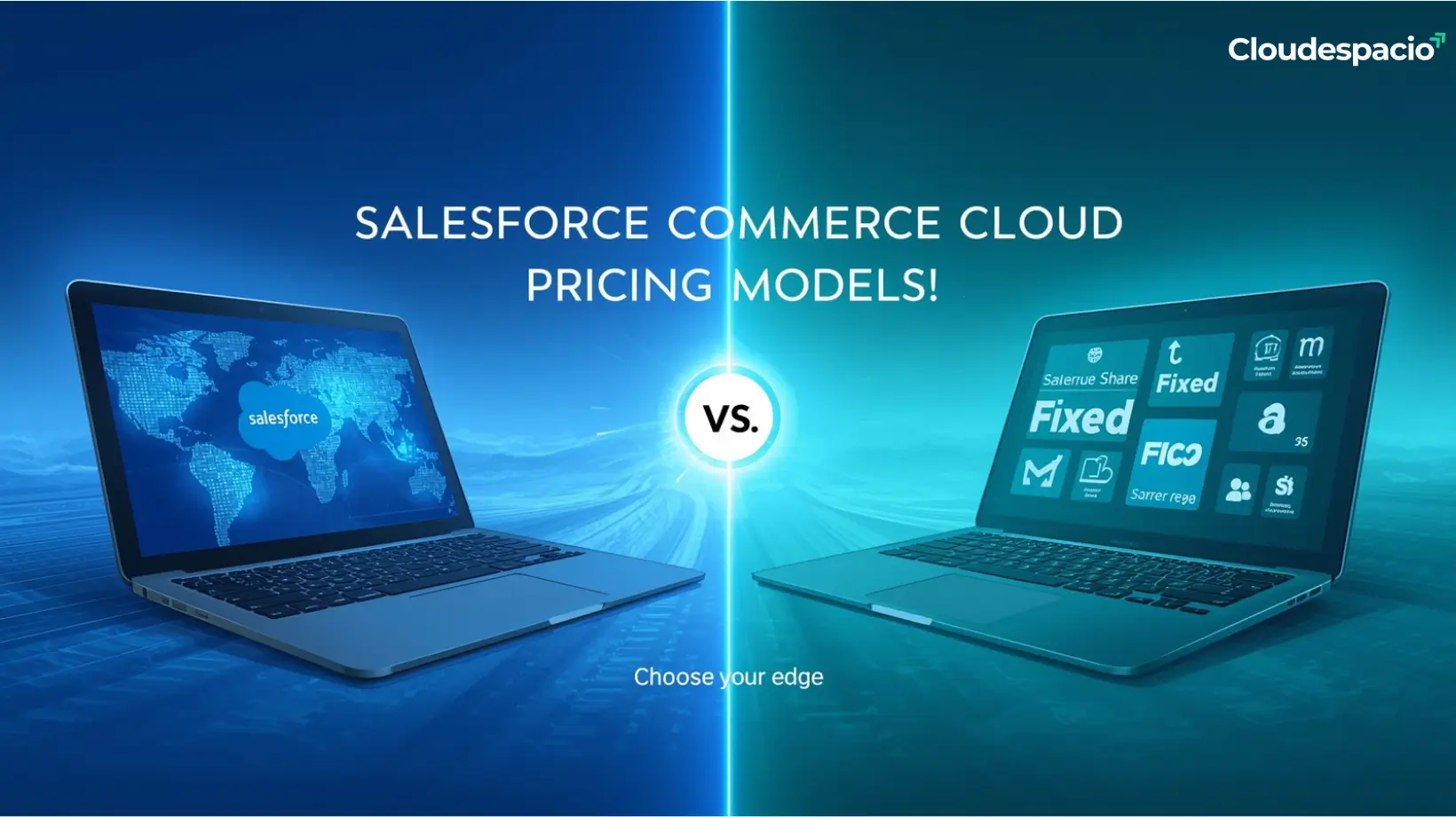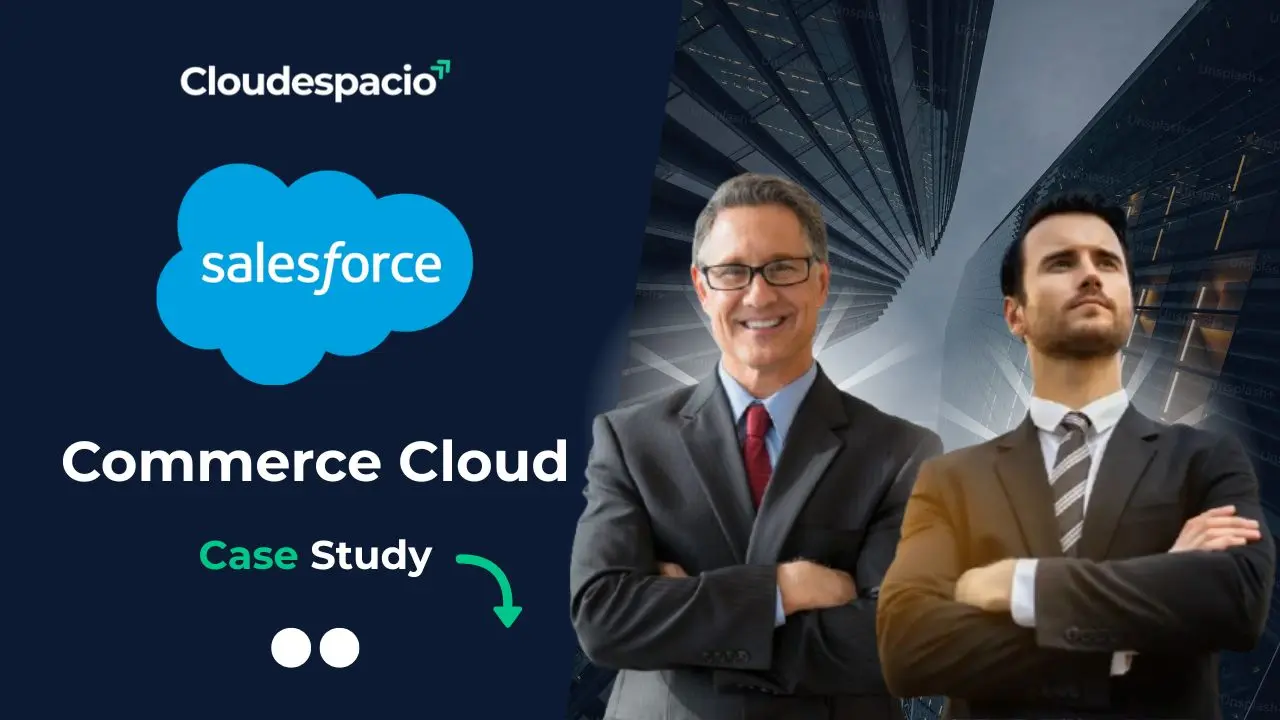


Understanding the investment required for a powerful e-commerce platform is a critical step for any business. When it comes to Salesforce Commerce Cloud (SFCC), the pricing structure is designed to align with your success. However, navigating the different options can seem complex. This guide breaks down the core Salesforce Commerce Cloud pricing models to help you make an informed decision for your business.
We will explore the two primary approaches: the traditional revenue-share model and the less common fixed-cost arrangements. By understanding the nuances of Salesforce Commerce Cloud pricing, including license costs, GMV-based fees, and factors that influence enterprise-level expenses, you can choose the path that best fits your financial strategy and growth ambitions.
Before diving into the specific models, it’s essential to understand the central metric that drives most SFCC pricing: Gross Merchandise Volume (GMV). GMV represents the total value of all goods sold through your e-commerce site over a specific period, before deducting costs like fees, returns, or discounts.
Salesforce uses a tiered approach where the percentage you pay decreases as your GMV grows. This means the platform’s cost scales directly with your sales performance, creating a partnership where Salesforce is invested in your growth. This GMV-based fee is a fundamental component of the overall Salesforce Commerce Cloud license cost.
The most common approach to SFCC pricing is the revenue-share, or GMV-based, model. In this structure, your licensing fee is a percentage of your GMV. It’s a true partnership model where the cost of the platform is directly tied to the revenue it helps generate.
Salesforce establishes specific GMV tiers, each with a corresponding percentage rate. For example:
These percentages are illustrative and subject to negotiation, but the principle remains the same: as your sales increase and you move into higher tiers, the rate you pay on that new tier of revenue decreases. This structure is particularly appealing for businesses looking for a scalable and predictable cost model.
This model is often the standard for both B2C and Salesforce B2B Commerce Cloud pricing, providing a flexible framework for different business types.
While less common, some businesses, particularly very large enterprises, may negotiate a fixed-cost or subscription-based pricing model. This arrangement involves paying a predetermined, flat fee for the Salesforce Commerce Cloud license, regardless of GMV fluctuations.
A fixed-cost model is typically reserved for large enterprise Salesforce Commerce Cloud costs. It becomes a viable option for global brands with extremely high sales volumes, multiple storefronts, and complex operational needs. In these scenarios, a GMV-based fee, even at a low percentage, could result in an astronomical number.
Negotiating a fixed license often involves a multi-year commitment. It is based on factors beyond just GMV, such as the number of sites, regions, and the need for high-volume licensing.
The Salesforce Commerce Cloud license cost is just one piece of the puzzle. Several other factors contribute to the total cost of ownership (TCO) for your platform.
The specific product you choose impacts pricing. Salesforce B2B Commerce Cloud pricing may differ from B2C, as it includes features tailored for business buyers, such as custom catalogs, negotiated pricing, and complex shipping arrangements. Businesses that need both B2C and B2B capabilities will need a license that covers both functionalities.
Your initial investment will include the cost of implementation. Partnering with a certified Salesforce Commerce Cloud implementation agency like Cloudespacio is crucial for a successful launch. Implementation costs depend on:
The large enterprise SFCC cost can be influenced by the number of storefronts you operate. A global brand with different sites for various countries or brands will have a more complex pricing structure. Similarly, businesses with complex catalog pricing, featuring thousands of SKUs and varied price books, may see this reflected in their overall cost.
The SFCC ecosystem includes a vast marketplace of third-party applications. While these apps can add powerful functionality, many come with their own subscription fees. The cost of integrating with and maintaining connections to other business-critical systems also contributes to the TCO.
After your site goes live, you will need ongoing support for maintenance, security patches, and optimizations. Many businesses retain their implementation partner on a monthly retainer to ensure the platform continues to perform at its best and to roll out new features.
Choosing the right model comes down to your business size, growth trajectory, and financial preferences.
Ultimately, the best way to get a precise understanding of your potential costs is to engage directly with Salesforce and a trusted implementation partner like Cloudespacio. We can help you analyze your business needs, forecast your GMV, and navigate the negotiation process to secure a pricing structure that fuels your growth.

Cloudespacio, headquartered in Singapore, is a prominent independent Salesforce and leading consulting firm, dedicated to prioritizing client satisfaction.
Copyright © 2025 All Rights Reserved. Designed by Navpatra.

If you have a project in mind, let’s talk!